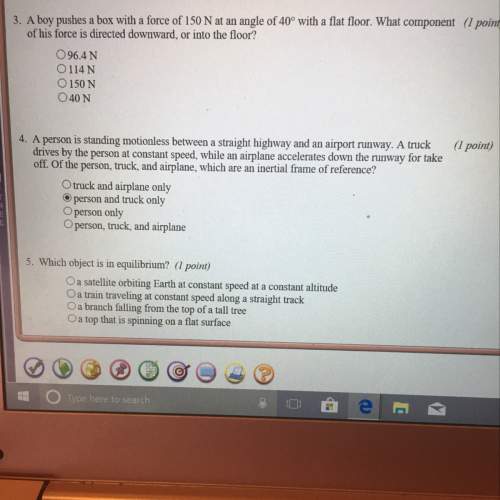
Physics, 17.12.2021 08:00, isaacgarcia0830
An astronaut stands on the surface of a spherical asteroid that has a weak gravitational field but no atmosphere. The astronaut throws a small rock straight upward, as shown at left above. The rock travels upward until it reaches a distance of 2R from the center of the asteroid, where R is the asteroid’s radius, and then falls back down to the asteroid’s surface.
The graph at left below shows the rock’s velocity as a function of time after being thrown upward with an initial velocity v01. The dashed line shows what the velocity would be if the rock experienced a constant acceleration, and the solid curve shows the rock’s actual velocity.
After the rock lands back on the surface, the astronaut then throws the rock straight upward a second time but with a greater force so that the rock’s initial speed v02 is greater than initial speed v01 for the first throw. The graph at right below shows the rock’s velocity as a function of time after being thrown upward the second time.
In a clear, coherent, paragraph-length response that may also contain equations and/or drawings (if you would like to submit a drawing, draw it on a separate piece of paper and turn it in to your teacher), make claims for the following aspects of the rock’s motion.
For the first throw, state a claim for what is happening at time t1.
State a claim about the strength of the gravitational force exerted on the rock as the rock gets farther from the asteroid.
For the first throw, state a claim about the relationship about the strength of the gravitational force exerted on the rock as the rock gets farther from the asteroid and the behavior indicated between time 0 and t1 in the velocity-time graph.
For the second throw, state a claim about why there is a horizontal asymptote for the velocity.

Answers: 3
Other questions on the subject: Physics



Physics, 22.06.2019 16:30, sti192
The air in an automobile tire with a volume of 2.60 ft3 is at 70°f and 21 psig. determine the amount of air that must be added to raise the pressure to the recommended value of 30 psig. assume the atmospheric pressure to be 14.6 psia and the temperature and the volume to remain constant. the gas constant of air is ru = 53.34ft⋅lbflbm⋅r(1 psia144 lbf/ft2) = 0.3704 psia⋅ft3lbm⋅r the amount of air that must be added to raise the pressure is lbm
Answers: 3

Physics, 23.06.2019 00:30, Tanya120
Which of the following statements are evidence that gases do not always behave ideally? check all that apply.? a. co2 gas becomes dry ice (solid co2) at 1 atm and –78.5 °c. b. when two gases are mixed, they follow dalton\'s law of partial pressures. c. at 4 k and 1 atm, helium is a liquid. d. it is impossible to compress a gas enough so that it takes up no volume.
Answers: 3
Do you know the correct answer?
An astronaut stands on the surface of a spherical asteroid that has a weak gravitational field but n...
Questions in other subjects:

Biology, 25.03.2020 21:50


English, 25.03.2020 21:50


Chemistry, 25.03.2020 21:50


Mathematics, 25.03.2020 21:50

Biology, 25.03.2020 21:50


Mathematics, 25.03.2020 21:51







